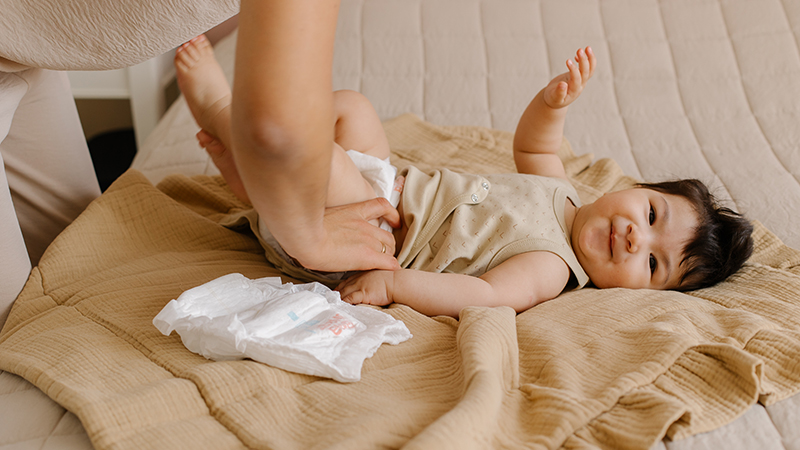What Is an Overactive Bladder?
Treatment Options for Frequent Urination and Leakage
Updated July 2025
If your bladder is calling you to the restroom repeatedly throughout the day and night, you may have what is called "overactive bladder" or OAB. And, you aren't alone. OAB affects approximately 33 million people in the United States, or 10% of the population. This common condition, where the bladder contracts at the wrong time and without warning, is characterized by a frequent and sudden urge to urinate even when the bladder is not full.
People don't realize that constipation and overactive bladder can be related.— Jeremy D. Lai, MD
Even though OAB is common and treatable, it is a condition that can take years for people to seek medical help for, says Jeremy D. Lai, MD, a urologist at Northwestern Medicine. He explains that people can be embarrassed by the symptoms and often don't know that there are several treatment options that can help, including some you can do at home.
What causes an overactive bladder?
According to Dr. Lai, there are many possible causes of OAB, including:
- Age: OAB is more common in older adults but can affect teenagers and young adults as well.
- Medications: Some medications, such as decongestants and diuretics (water pills), can make OAB worse.
- Medical conditions: OAB can be a symptom of other medical conditions, such as:
- Diabetes
- Urinary tract infections (UTIs)
- Multiple sclerosis (MS)
- Parkinson's disease
- Bladder stones
- Kidney disease
- Enlarged prostate
- Bladder cancer
- Obstructive sleep apnea (if nighttime urination is the primary concern)
- Lifestyle factors: Stress, caffeine, alcohol, smoking and excess weight can cause OAB.
Constipation can also cause OAB. "People don't realize that constipation and overactive bladder can be related," says Dr. Lai. "The colon and rectum sit right behind the bladder. When a large amount of stool is present, it can irritate and put pressure on the bladder, which is then interpreted by the body as the need to urinate."
The symptoms of OAB can vary from person to person, but they often include:
- Having to urinate more than eight times a day
- Having to urinate two or more times during the night
- Feeling like you have to urinate right away, even if you just went
- Leaking urine when you feel the sudden urge to go
- Feeling like you can't completely empty your bladder
If you are experiencing any of these symptoms, it is important to see your physician to get a diagnosis. While OAB does have similar symptoms to urge incontinence and the two often occur together, they are separate conditions.
There is a wide range of treatment options available for OAB, including:
Lifestyle changes
- Dietary changes: “Different people can find different foods and drinks irritating to their bladder,” says Dr. Lai. While triggers vary, consider these tips:
- Eliminate caffeinated beverages, alcohol and chocolate.
- Minimize citrus fruits and juices, spices, sugar and artificial sweeteners.
- Eat a high-fiber diet or talk to your care team about adding a daily stool softener to avoid constipation.
- Limit your fluid intake, if applicable. “If nighttime urination is a problem, limit fluids as much as possible within three hours of going to bed,” says Dr. Lai. “Ask your physician if you should limit the amount of water and other liquids you drink during the day.”
- Bladder retraining: With this behavioral health intervention, you can train your bladder muscles to hold urine for longer periods of time. You begin by resisting the urge to urinate for short intervals, as short as one to two minutes after an initial urge, and slowly lengthen that interval to 15 to 30 minutes over time. The goal is to gradually increase this interval until you’re able to hold the urge to urinate for more comfortable periods of time.
Minimally invasive treatments
- Pelvic floor therapy: Physical therapy of the pelvic floor aims to rehabilitate the pelvic floor muscles to restore their normal function. For the best results, you should work with a specialized physical therapist who will help you learn the most effective techniques.
- Biofeedback: A technique, often used with pelvic floor muscle exercises, that includes being connected to electrical sensors that help you get information about your body and find the right pelvic muscles to squeeze or relax.
- Nerve stimulation: Since your nerves send signals to tell your brain that your bladder is full, treating your nerves can help bladder control. There are two types of nerve stimulation procedures:
- Sacral nerve stimulation: A device implanted under the skin near the back of your hip sends electrical impulses to the sacral nerves, which help calm the bladder muscle.
- Percutaneous tibial nerve stimulation: A small needle electrode is inserted near the ankle to send electrical impulses to the tibial nerve. These signals travel to the sacral nerves, the same spot where the bladder nerves originate, and help the bladder muscle calm down.
- Bladder Botox® therapy: Botox is injected into the bladder muscle to partially paralyze and relax the muscle, causing a decrease in urgency and frequency of urination.
Medications and surgery
- Medications: There are medications that block certain nerve signals that trigger bladder contractions as well as medications that relax the bladder muscle and help it hold more urine. Sometimes your physician may prescribe you one or two medications to relieve symptoms.
- Surgery: Not often used to treat OAB, surgery may be necessary if your loss of bladder control can't be managed with any other option and is truly a debilitating condition. Surgery is done to either increase your bladder volume, reroute the flow of your urine or remove the bladder entirely. Surgery is typically performed on patients who have had prior pelvic radiation.
Dr. Lai recommends starting with behavior modifications — the first line of defense.
"Bladder retraining and addressing bladder irritants in dietary or bowel habits come first. No medications will overcome continued smoking or excessive caffeine, alcohol or stress, for example,” he explains. “Surgery for OAB is extremely rare.”
With the proper diagnosis and treatment, you can find relief from an overactive bladder and improve your quality of life.






